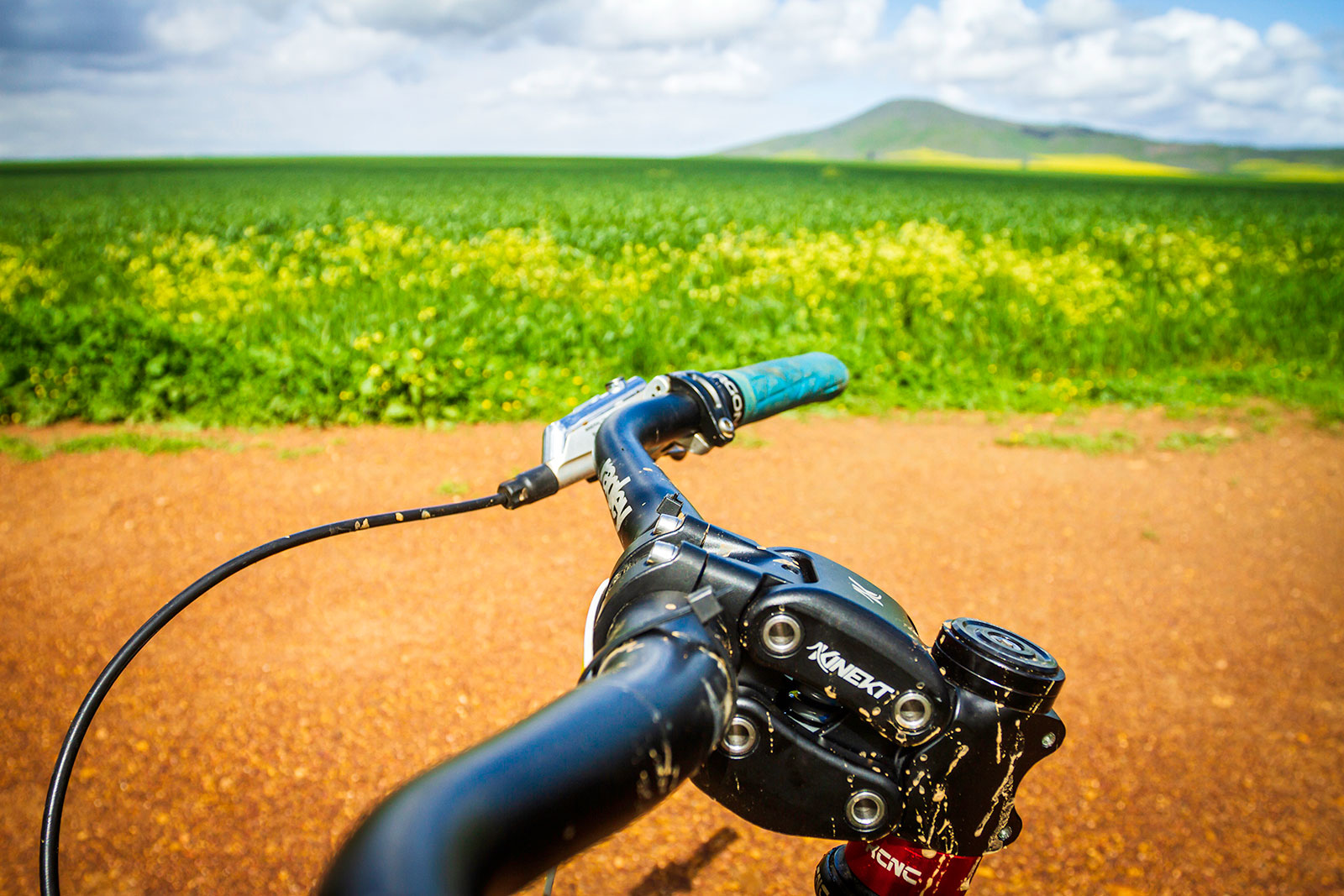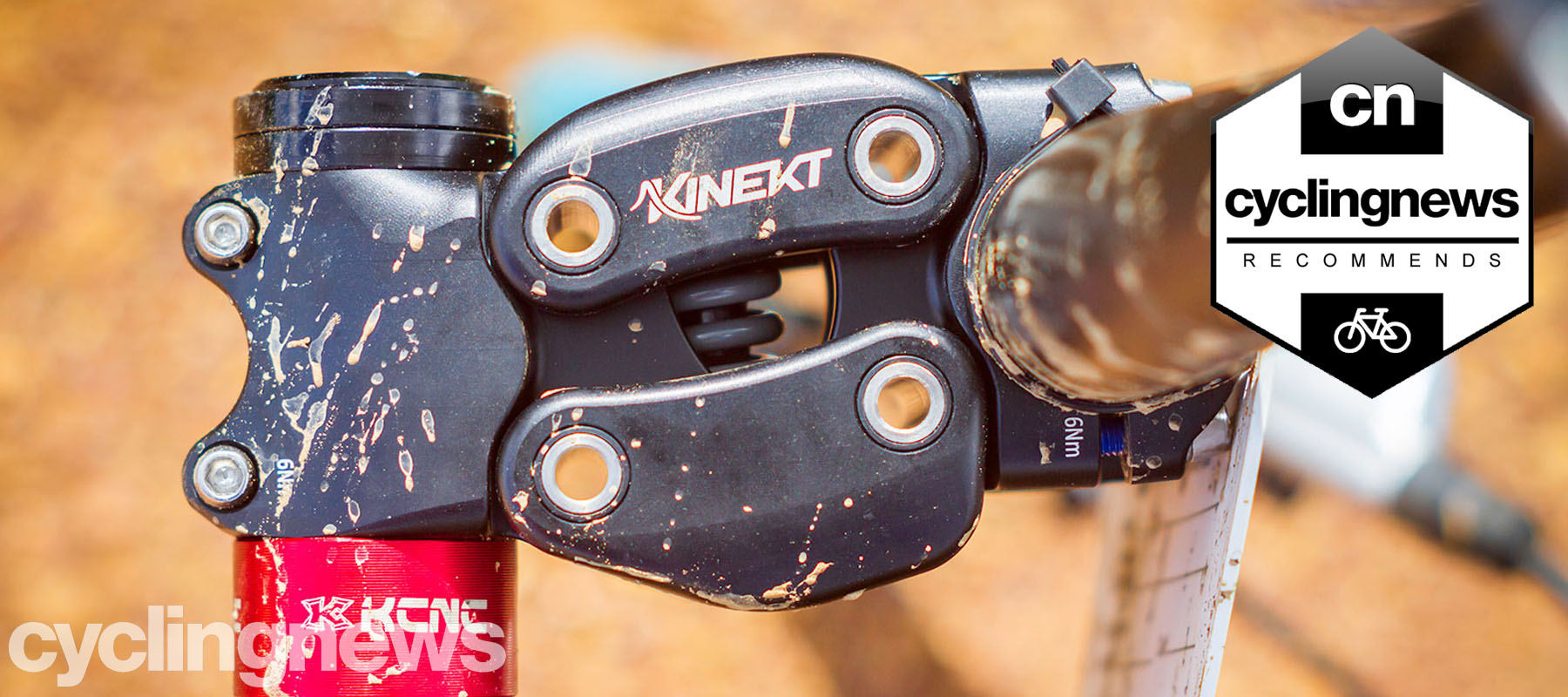Cyclingnews Verdict
Robust design that takes some sting out of those long days on a corrugated gravel route
Pros
- +
Adds a bit of active compliance, without the maintenance burden of a conventional suspension fork
Cons
- -
There's no arguing against its mass, if you are a gram-counter
You can trust Cyclingnews
The popularity of gravel riding has seen some nearly forgotten terrain compliance technologies revive.
Specialized popularised the Future Shock with its Diverge gravel bike range, as a design objective to reduce hand, wrist, arm and shoulder fatigue when routing along corrugated gravel routes. Now, the Cirrus Kinekt suspension stem aims to provide the same solution to the masses.
As more adventurous gravel riders have leveraged the benefit of frames with larger tyre clearances, singletrack detours have also become fair game for the all-terrain rigid bike rider. But what to do, if you are suffering handlebar contact point fatigue, on your gravel rides?
- Best gravel bikes: Fun and fast adventure bikes for your next off-road ride
- Should I buy a gravel bike? The pros and cons
- Best budget gravel bikes: Gravel grinding on a budget
Headquartered in Bellingham, Washington, Cirrus is an innovative component brand, with its founder, Paul Barkley, having vast experience riding on Africa’s beautiful but brutal gravel roads. The company’s latest offering is a contemporary redesign of the oft-maligned suspension stem concept.
During the mountain bike development and experimentation surge in the 1990s, elastomers and suspension stems were often touted as a short-travel fork alternative. Hampered by poor execution and the demanding nature of mountain bike terrain, suspension stems garnered a bad reputation.
Now the gravel bike movement has given the suspension stem a second chance, to prove whether it has value, or is pure industrial design novelty.

Getting it right with gravel
Although the Kinekt is purposed for both urban and all-terrain use, we decided to test it on some of the most authentic gravel roads anywhere: farming backroads in the rural Western Cape of South Africa. This would present a true load-case and reveal whether this Cirrus stem is adequately robust in its construction and capable in its damping.
First impressions of the Cirrus Kinekt suspension stem after unboxing was surprise at its size. Housing the parallelogram link design and single coil spring is a package which is much larger than a conventional forged stem. Our test component was the Kinekt’s shortest 90mm variant, which still has a mass rating of 465g, much greater than a conventional single-piece stem.
Fitting the Kinekt stem is simple enough, although I doubted whether my headset has worked its way loose, initially. The 20mm worth of coil damping feels odd, at first, creating the sensation of something being way too loose within the steering geometry of your bike.
Parking lot testing is always disingenuous and on a static bike, the Kinekt feels strange. Heading onto some African farm roads I was expecting to be disappointed.
Suspension travel at the handlebar, instead of a fork’s axle, tends to unbalance your centre of gravity as a rider. But the Kinekt is not pretending to be a suspension fork. It is designed as a low-maintenance component with the purpose of dulling terrain buzz, when rolling huge distances over those unpaved roads that always reveal great adventure.

Ride like it is not there
Once I became accustomed to my handlebar moving in its own independent vertical rhythm to the frequency of gravel roads bumps and texture, the stem’s dynamics came into its own.
The Kinekt’s robustness proved impressive. Although it is not recommended for mountain bike use, I rolled down a blue-graded singletrack trail for testing purposes. My hands retained superior grip strength throughout the descent and I never felt out of control.
Steering accuracy could be a worry to many considering a suspension stem, but once you fall into confidence with the Kinekt’s structure and ride it naturally, any such concern becomes an afterthought.
The industrial designers and product people at Cirrus have chosen the Kinekt’s travel range wisely. At 20mm, it adequately insulates one from the worst road surface buzz without having too much travel.
With a greater range of vertical travel, Cirrus would risk generating an unnatural sensation of your handlebar pivoting too much and unbalancing your centre of gravity.

I was sceptical of the Kinekt. My gravel rides are usually a purist experience, rolling a Reynolds 853 steel frame from Cotic, on large volume 26” tyres, with a chromoly fork. When my palms start getting warm as a sign of terrain buzz overwhelming my grip strength, I tolerate it as required gravel ride suffering.
With the Cirrus Kinekt suspension stem, my gravel journey endurance is much greater – and safer. The feeling of a numb hand not being capable of dexterously triggering a brake lever, due to terrain fatigue, is not a happy gravel biking moment. With the Kinekt, my hands always felt ready to modulate all cockpit controls with assurance.
Cirrus ships the Kinekt suspension stem with a choice of three springs and at 75kg, I never felt the need to swap out for the stouter option, being entirely content on the ‘medium’ coil. Larger riders might benefit from the firmer spring and fitting it is quite simple, requiring only a 2.5 Allen key to disassemble the stem’s structure and access the coil’s mounting position.
At $179.95 it is not cheap and adds significant weight to your cockpit, but the Cirrus Kinekt’s build quality appears stellar and its functionality has been proven beyond doubt during our testing.
Those gravel riders and bike packing enthusiasts who want a component upgrade that will make their big sky riding miles more comfortable, without the burden of complexity, will find value in the Kinekt.
Lance Branquinho is a Namibian born media professional, with 15-years of experience in technology and engineering journalism covering anything with wheels. Being from Namibia, he knows a good gravel road when he sees one, and he has raced some of Africa’s best-known mountain bike stage races, such as Wines2Wales and Berg&Bush.
